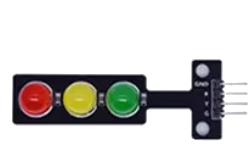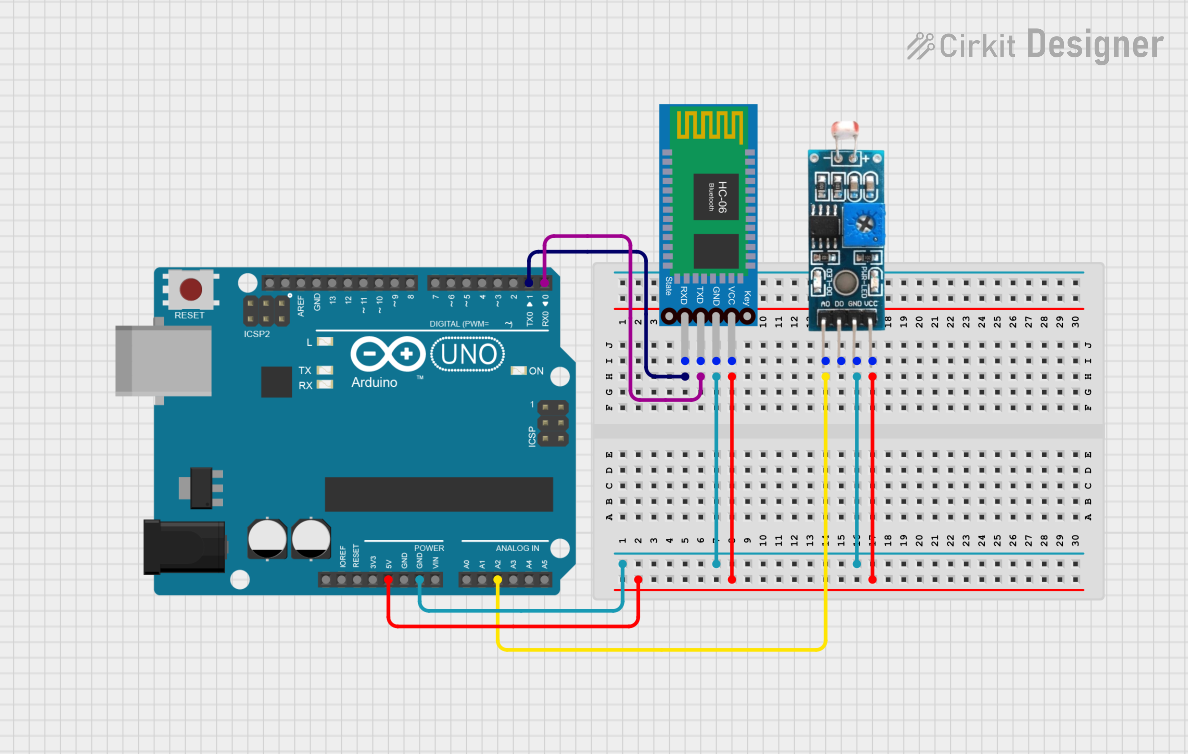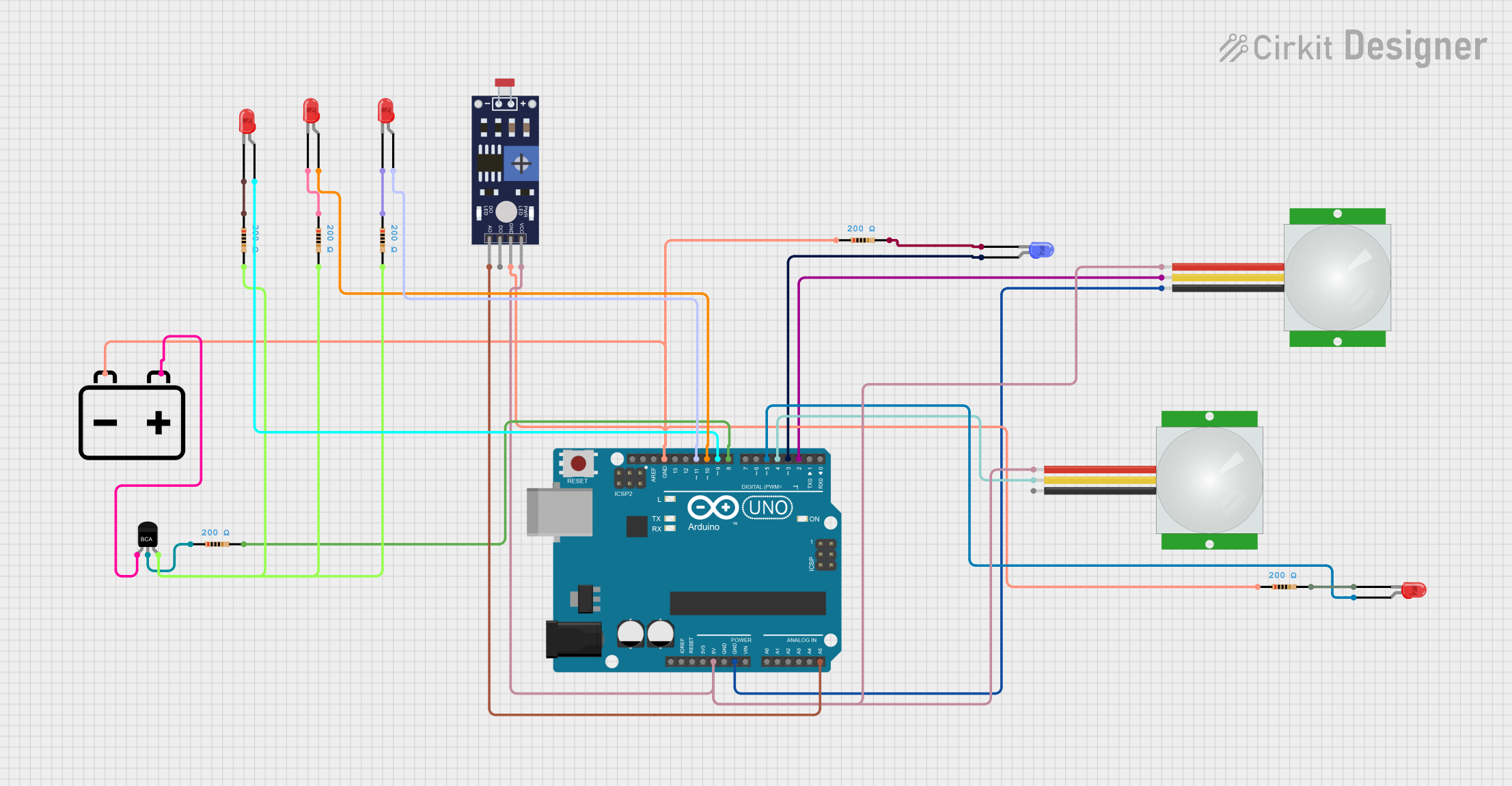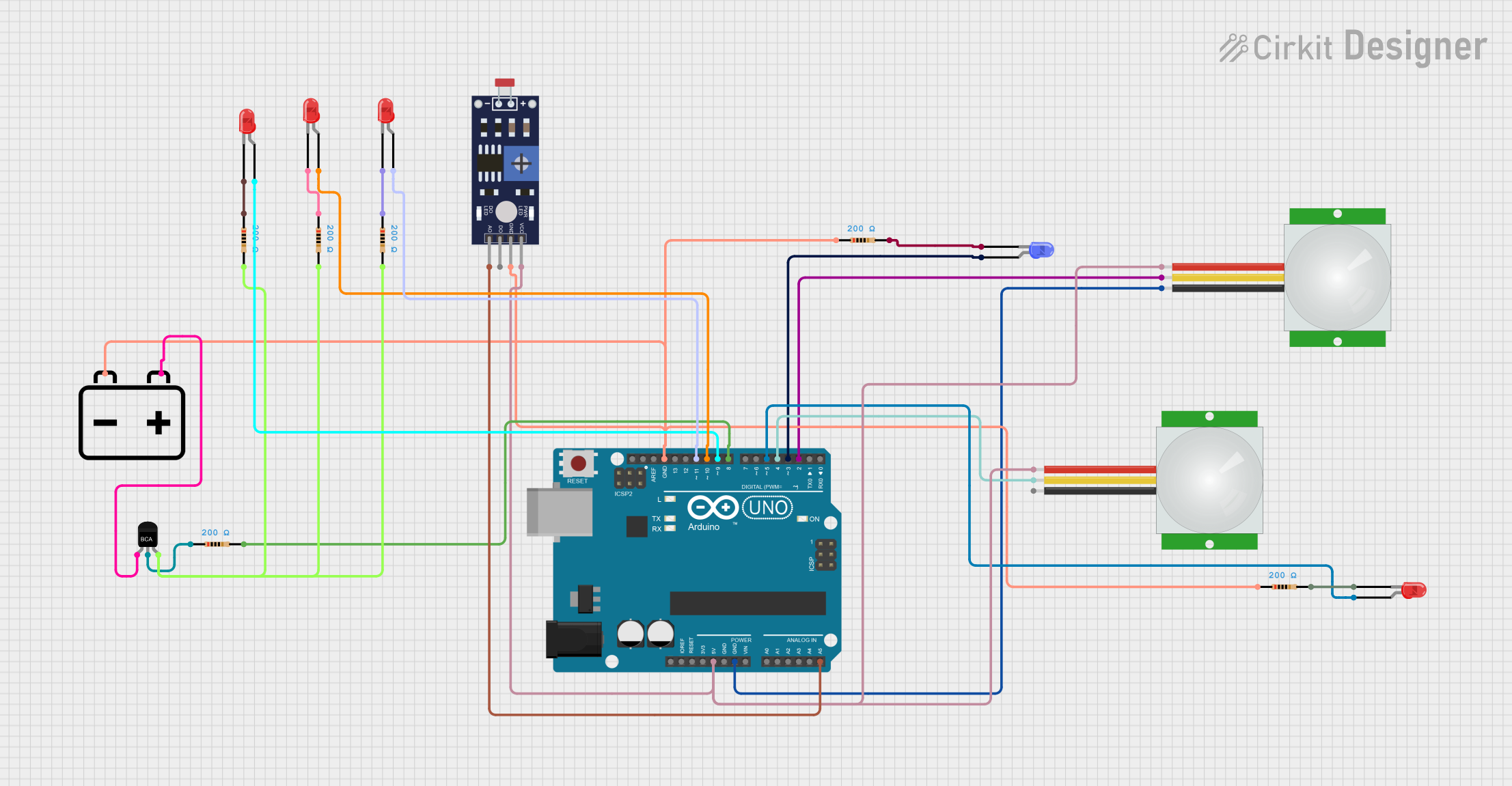
How to Use LIGHT: Examples, Pinouts, and Specs

 Design with LIGHT in Cirkit Designer
Design with LIGHT in Cirkit DesignerIntroduction
A LIGHT is a device that emits light, commonly used for illumination in various applications, including homes, offices, and outdoor areas. It is an essential component in both residential and industrial settings, providing visibility and enhancing safety. Lights come in various forms, such as incandescent bulbs, LEDs (Light Emitting Diodes), and fluorescent lamps, each suited for specific use cases.
Common applications of LIGHT include:
- General indoor and outdoor lighting
- Decorative lighting in homes and events
- Task lighting for workspaces
- Signal and indicator lights in electronic devices
- Automotive and street lighting
Explore Projects Built with LIGHT

 Open Project in Cirkit Designer
Open Project in Cirkit Designer
 Open Project in Cirkit Designer
Open Project in Cirkit Designer
 Open Project in Cirkit Designer
Open Project in Cirkit Designer
 Open Project in Cirkit Designer
Open Project in Cirkit DesignerExplore Projects Built with LIGHT

 Open Project in Cirkit Designer
Open Project in Cirkit Designer
 Open Project in Cirkit Designer
Open Project in Cirkit Designer
 Open Project in Cirkit Designer
Open Project in Cirkit Designer
 Open Project in Cirkit Designer
Open Project in Cirkit DesignerTechnical Specifications
The technical specifications of a LIGHT vary depending on its type (e.g., LED, incandescent, fluorescent). Below are general specifications for an LED light, which is the most commonly used type due to its energy efficiency and long lifespan.
General Specifications
| Parameter | Value |
|---|---|
| Operating Voltage | 3V to 12V (depending on type) |
| Current Consumption | 10mA to 20mA (typical for LEDs) |
| Power Rating | 0.1W to 10W (varies by design) |
| Light Output (Luminous Flux) | 10 to 1000 lumens |
| Color Temperature | 2700K (warm) to 6500K (cool) |
| Lifespan | 15,000 to 50,000 hours (LEDs) |
Pin Configuration (for an LED)
| Pin Name | Description |
|---|---|
| Anode (+) | Positive terminal; connect to power supply |
| Cathode (-) | Negative terminal; connect to ground |
Usage Instructions
How to Use a LIGHT in a Circuit
- Determine the Voltage and Current Requirements: Check the specifications of the LIGHT to ensure compatibility with your power source.
- Use a Resistor (for LEDs): LEDs require a current-limiting resistor to prevent damage. Calculate the resistor value using Ohm's Law:
[
R = \frac{V_{supply} - V_{forward}}{I_{forward}}
]
Where:
- ( V_{supply} ) is the supply voltage
- ( V_{forward} ) is the forward voltage of the LED
- ( I_{forward} ) is the forward current of the LED
- Connect the Terminals:
- Connect the anode (+) to the positive side of the power supply (via the resistor, if applicable).
- Connect the cathode (-) to the ground.
- Test the Circuit: Power on the circuit and verify that the LIGHT emits light.
Example: Connecting an LED to an Arduino UNO
Below is an example of how to connect and control an LED using an Arduino UNO.
Circuit Setup
- Connect the anode (+) of the LED to a digital pin on the Arduino (e.g., pin 13) through a 220-ohm resistor.
- Connect the cathode (-) of the LED to the Arduino's GND pin.
Arduino Code
// This code blinks an LED connected to pin 13 of the Arduino UNO.
// Ensure a 220-ohm resistor is used to limit current to the LED.
const int ledPin = 13; // Define the pin connected to the LED
void setup() {
pinMode(ledPin, OUTPUT); // Set the LED pin as an output
}
void loop() {
digitalWrite(ledPin, HIGH); // Turn the LED on
delay(1000); // Wait for 1 second
digitalWrite(ledPin, LOW); // Turn the LED off
delay(1000); // Wait for 1 second
}
Important Considerations
- Polarity: Ensure correct polarity when connecting the LIGHT. Reversing the connections may damage the component.
- Resistor Selection: Always use an appropriate resistor for LEDs to prevent overcurrent.
- Heat Management: High-power lights (e.g., high-wattage LEDs) may require heat sinks to dissipate heat effectively.
Troubleshooting and FAQs
Common Issues
The LIGHT Does Not Turn On
- Cause: Incorrect wiring or insufficient power supply.
- Solution: Double-check the connections and ensure the power supply matches the LIGHT's requirements.
The LIGHT Flickers
- Cause: Unstable power supply or loose connections.
- Solution: Use a stable power source and secure all connections.
The LIGHT Burns Out Quickly
- Cause: Excessive current or voltage.
- Solution: Use a current-limiting resistor (for LEDs) and ensure the power supply is within the specified range.
The LIGHT Is Dim
- Cause: Insufficient current or voltage.
- Solution: Verify the power supply and resistor value.
FAQs
Q: Can I connect an LED directly to a 5V power supply?
A: No, you must use a current-limiting resistor to prevent damage to the LED.Q: How do I calculate the resistor value for an LED?
A: Use the formula ( R = \frac{V_{supply} - V_{forward}}{I_{forward}} ).Q: Can I use a LIGHT with an AC power source?
A: Some lights, such as incandescent bulbs and certain LEDs with built-in drivers, can work with AC power. Check the specifications of your LIGHT.Q: Why is my LED heating up?
A: Excessive current or insufficient heat dissipation can cause overheating. Use a proper resistor and, if necessary, a heat sink.
This documentation provides a comprehensive guide to understanding and using a LIGHT in various applications. Follow the instructions and best practices to ensure optimal performance and longevity of your LIGHT.